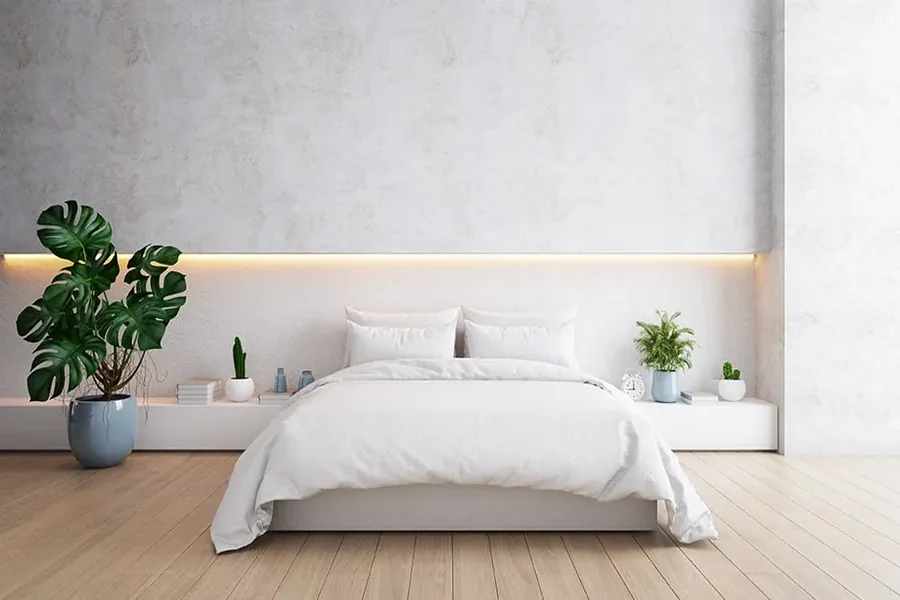In a world overwhelmed by consumerism, constant stimulation, and clutter, minimalism offers a refreshing alternative—a lifestyle centered on simplicity, intentionality, and freedom. Embracing minimalism means focusing on what truly matters by eliminating excess physical possessions, mental noise, and unnecessary obligations. This transformative approach not only declutters your environment but also enhances well-being, productivity, and financial health. This article explores the benefits of minimalism and provides practical steps to embrace it today. It’s time to read smart—start with tamilkolly.
Understanding Minimalism: More Than Just Decluttering
Minimalism isn’t simply about having fewer things; it’s a mindset that prioritizes quality over quantity and meaning over materialism. It encourages living with intention—choosing possessions, relationships, and activities that add value to your life while letting go of distractions.
Minimalism can apply to various aspects of life, including:
- Physical Space: Simplifying belongings and living environments.
- Digital Life: Reducing screen time and online clutter.
- Time Management: Focusing on meaningful activities and saying no to nonessential commitments.
- Mental Well-Being: Letting go of negative thoughts and stressors.
By adopting minimalism holistically, you cultivate balance and clarity.
The Top Benefits of Minimalism
Reduced Stress and Mental Clarity
Cluttered environments and busy schedules contribute to anxiety and overwhelm. Minimalism promotes:
- Calmer Spaces: Organized, tidy areas reduce sensory overload.
- Simplified Decision-Making: Fewer possessions and commitments mean less cognitive load.
- Enhanced Focus: Clear surroundings support concentration and creativity.
Mental clarity improves overall happiness and effectiveness.
Financial Freedom and Savings
Buying less reduces expenses and frees money for priorities.
- Lower Spending: Avoid impulse purchases and “retail therapy.”
- Increased Savings: Redirect funds toward debt repayment, investments, or experiences.
- Less Maintenance Cost: Fewer possessions require less upkeep, repair, and replacement.
Financial control reduces stress and opens new opportunities.
Improved Quality of Life
Minimalism encourages valuing experiences and relationships over things.
- More Time for What Matters: Less time spent shopping or managing possessions.
- Deeper Connections: Focus on meaningful interactions instead of material distractions.
- Greater Appreciation: Fewer belongings foster gratitude for what you have.
This shift enriches daily living and long-term fulfillment.
Environmental Impact
Consuming less reduces waste and resource depletion.
- Lower Carbon Footprint: Buying and discarding less helps mitigate climate change.
- Support for Sustainable Products: Minimalists often choose quality, eco-friendly items.
- Less Waste Generation: Responsible disposal and mindful consumption protect ecosystems.
Minimalism aligns with stewardship of the planet.
Increased Freedom and Flexibility
Owning less simplifies life logistics.
- Easier Moving or Travel: Fewer possessions mean less hassle.
- Freedom from Clutter: Physical and mental space to pursue passions.
- Empowerment: Control over your life choices and environment.
Freedom fosters personal growth and happiness.
How to Embrace Minimalism Today: Practical Steps
Step 1: Reflect on Your Why
Identify why you want to adopt minimalism.
- Clarify Motivations: Reduce stress, save money, simplify life, or support the environment.
- Set Intentions: Define goals and values to guide your journey.
Understanding your why fuels commitment.
Step 2: Declutter Your Physical Space
Start with tangible changes.
- Sort by Category: Clothes, books, kitchenware, electronics, etc.
- Use the “Does It Add Value?” Test: Keep items you use, love, or need.
- Donate, Sell, or Recycle: Responsibly dispose of unwanted items.
- Organize Remaining Items: Create designated spaces for belongings.
Begin small, and declutter gradually to avoid overwhelm.
Step 3: Simplify Your Digital Life
Reduce digital distractions and data overload.
- Unsubscribe from Unnecessary Emails: Clean your inbox regularly.
- Organize Files and Apps: Delete duplicates and rarely used apps.
- Limit Social Media Time: Use tools to monitor and restrict usage.
- Declutter Your Devices: Remove photos, videos, and documents that no longer serve.
A clean digital environment promotes productivity and peace.
Step 4: Streamline Your Schedule
Prioritize time for what truly matters.
- Review Commitments: Identify nonessential obligations to drop or delegate.
- Set Boundaries: Learn to say no politely but firmly.
- Schedule Downtime: Protect time for rest, hobbies, and relationships.
- Batch Similar Tasks: Increase efficiency and reduce task-switching.
Intentional scheduling balances productivity with well-being.
Step 5: Practice Mindful Consumption
Shift your purchasing habits.
- Buy Quality Over Quantity: Invest in durable, versatile items.
- Pause Before Purchases: Wait 24-48 hours to avoid impulse buying.
- Borrow or Rent When Possible: Reduce ownership burden.
- Support Ethical and Sustainable Brands: Align spending with values.
Mindful consumption reduces waste and promotes satisfaction.
Step 6: Cultivate Gratitude and Contentment
Appreciate what you have.
- Keep a Gratitude Journal: Note daily things you’re thankful for.
- Focus on Experiences: Seek joy in moments, not possessions.
- Practice Mindfulness: Stay present and savor simplicity.
Gratitude enhances happiness and reduces desire for more.
Step 7: Connect with Minimalist Communities
Find support and inspiration.
- Join Online Groups: Forums, social media pages, and blogs.
- Attend Workshops or Meetups: Learn and share with like-minded people.
- Follow Minimalist Influencers: Gain motivation and practical tips.
Community fosters accountability and growth.
Common Myths About Minimalism Debunked
- Minimalism Means Having Nothing: It’s about owning what adds value, not deprivation.
- Minimalism Is Only for Small Spaces: It benefits all lifestyles regardless of home size.
- Minimalism Is Expensive: While quality items may cost more upfront, overall spending decreases.
- Minimalism Is a Trend: It’s a timeless philosophy centered on intentional living.
Understanding the truth helps you embrace minimalism authentically.
Final Thoughts: Start Small, Live Fully
Minimalism is a journey, not a destination. By taking small, consistent steps to declutter, simplify, and focus on what matters, you create space for a richer, more intentional life. The benefits span mental clarity, financial freedom, environmental stewardship, and deeper personal fulfillment.
Embrace minimalism today—less truly is more.

